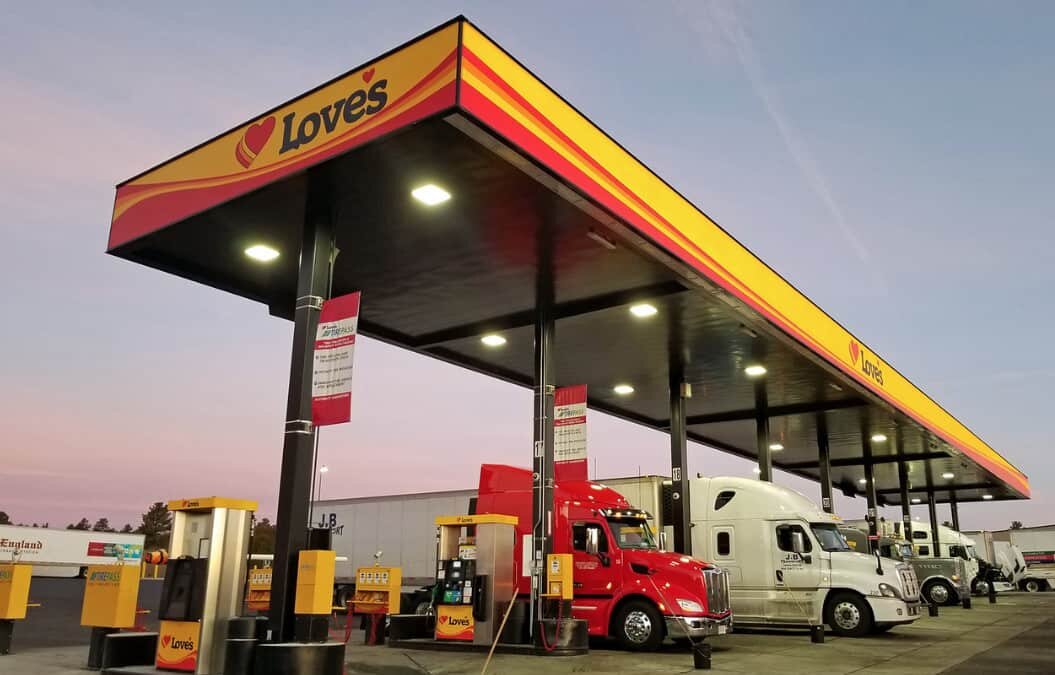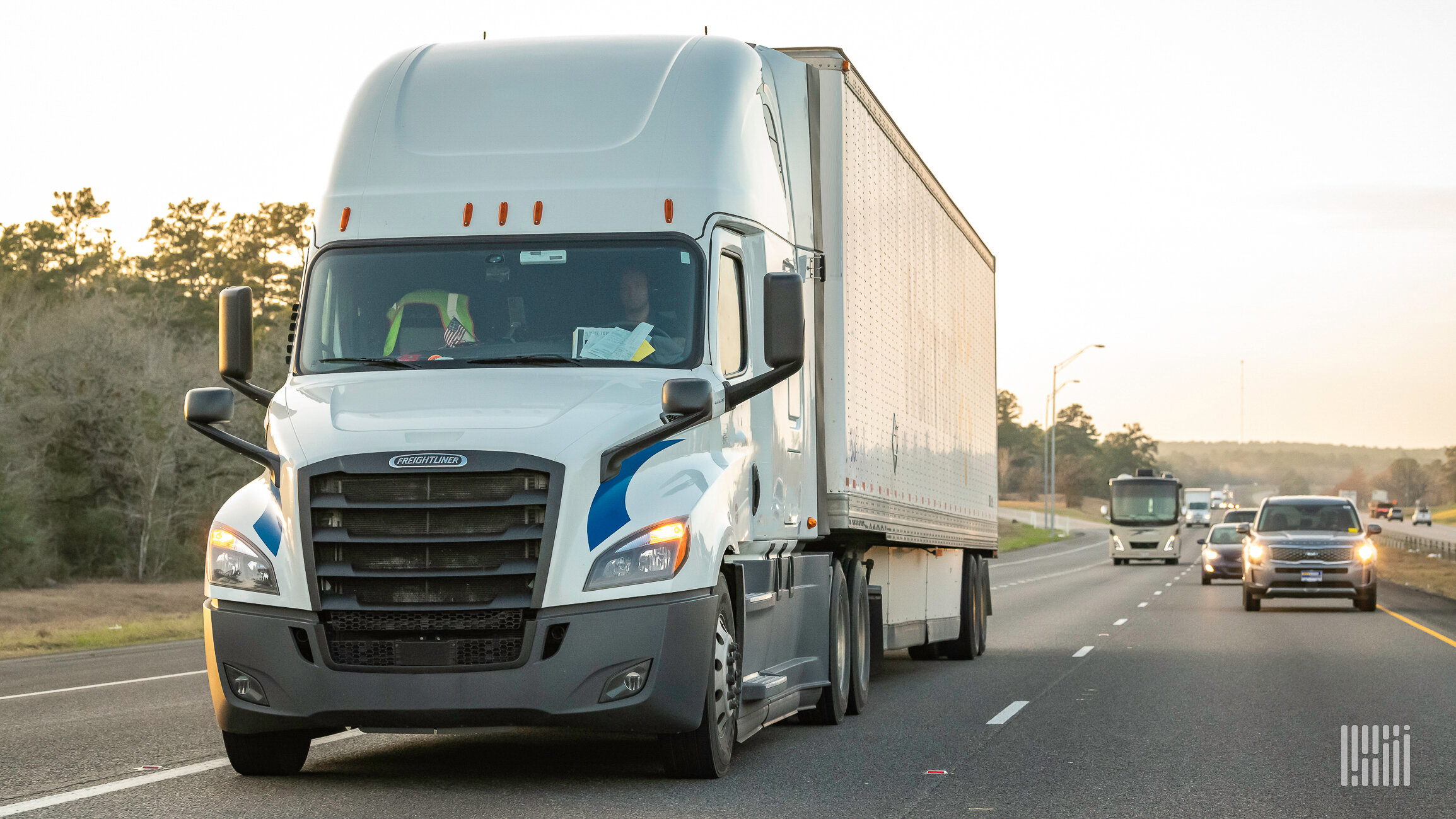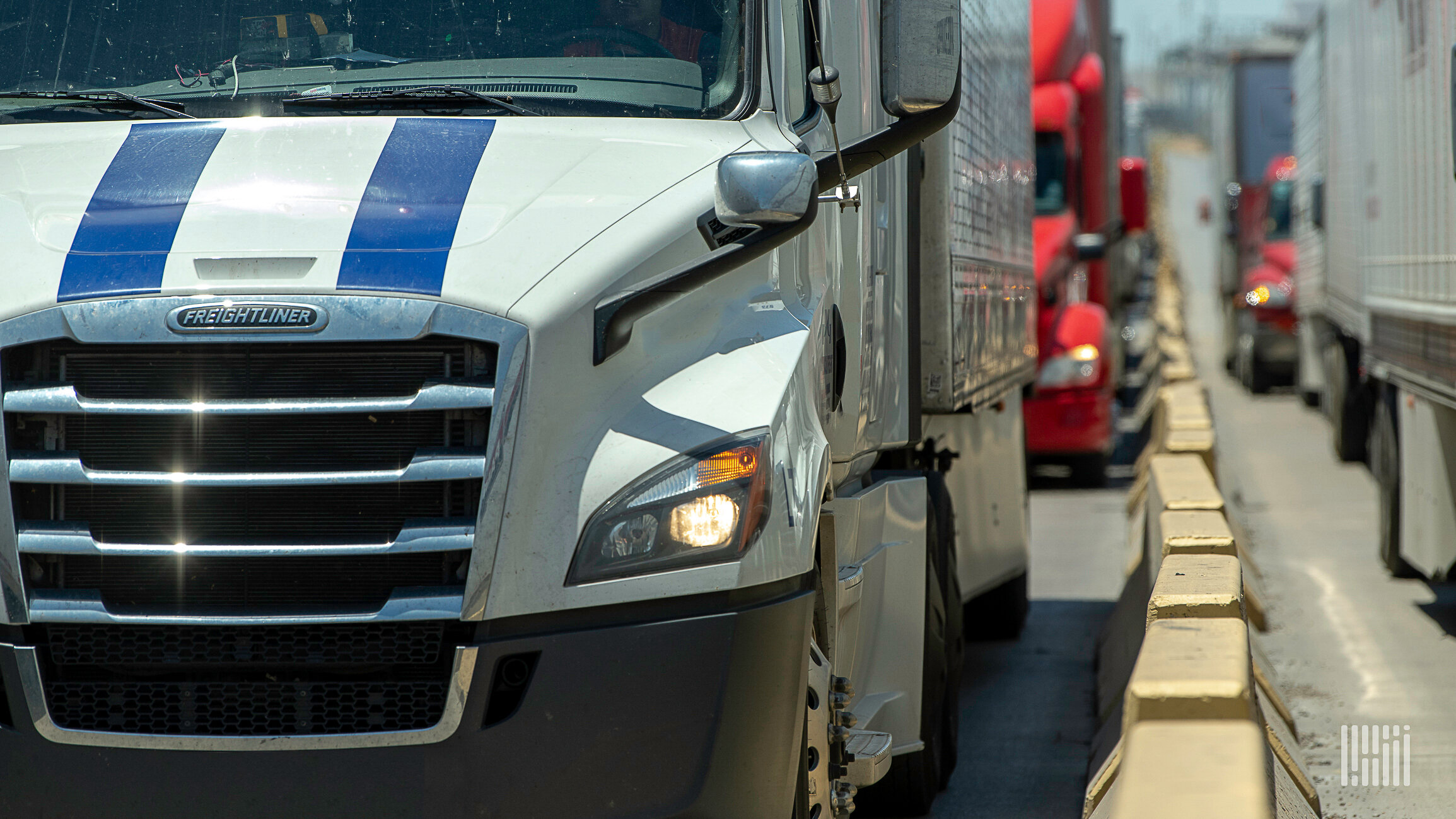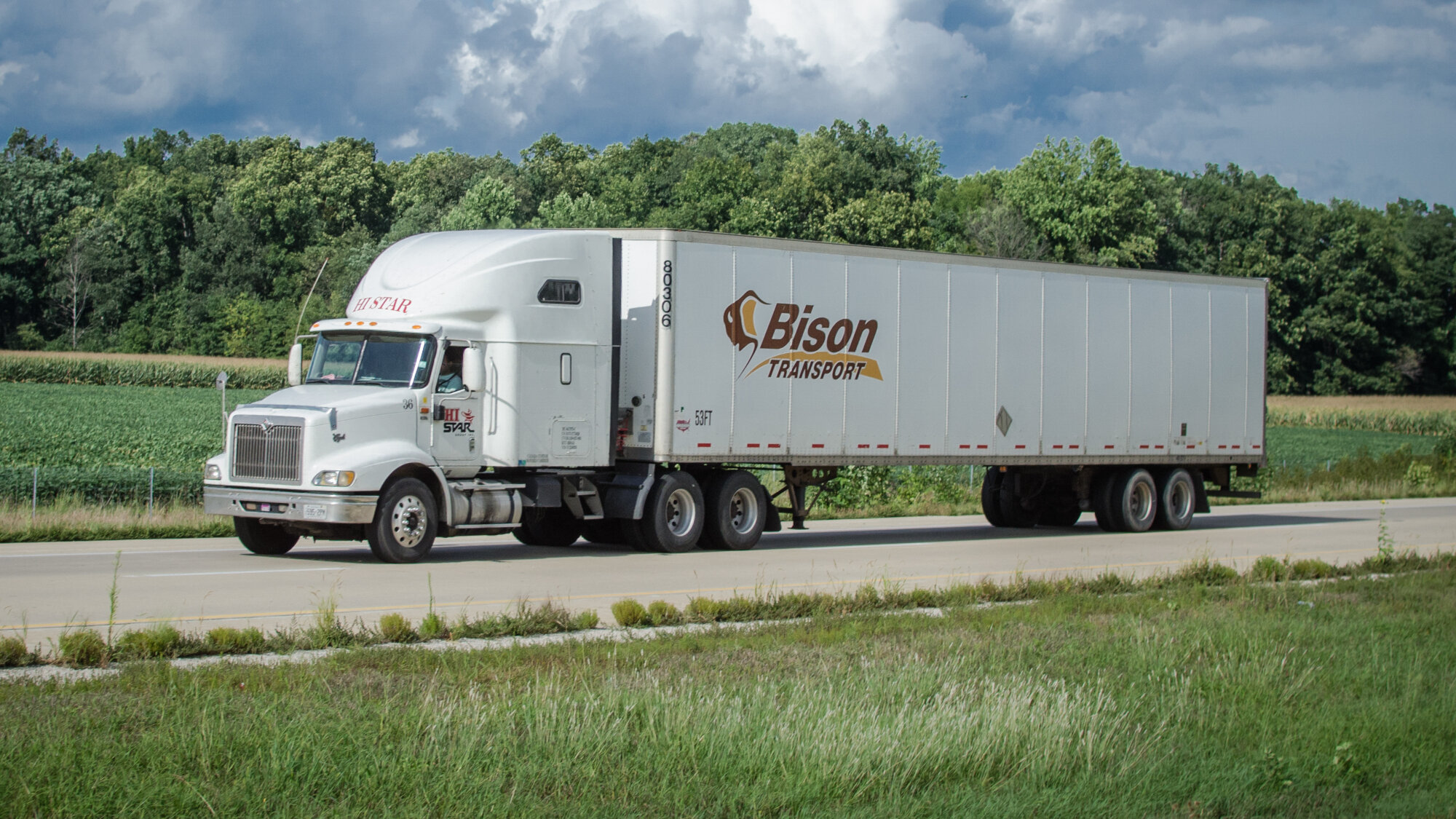
Photo: Loves Diesel Pump
Most big rigs in the U.S. have tanks that range in capacity from 120 gallons per tank up to 150 gallons and depending on the radius of operation, may have one tank for shorter hauls or two tanks for longer ones.
For fleets that are weight conscious, they often choose to run just one tank allowing for more payload since each tank of fuel weighs around 1,000 pounds. Single-tank operations are also more suited to short-haul fleets where the truck is starting from the same location each day allowing for refueling to occur at the fleet terminal using lower-cost diesel.
Longer distance fleets tend to run two tanks with the higher capacity 150-gallon tanks offering the highest mileage range and best options to purchase fuel at the lowest possible retail price.
Fuel tank capacity versus useable capacity
Even though a tank’s capacity is listed as 150 gallons, for example, not all of that fuel is useable. Drivers are always advised to only fill their tanks to around 95% capacity or just to the top of the neck under the filler cap and not use all of the fuel down at the bottom of the tank. Most professional drivers never run their engines past a quarter full on the fuel gauge.
Here are a few reasons why:
-
Ambient temperature – diesel expands and contracts as the ambient temperature increases and decreases:
-
Imagine filling a truck with diesel from a cool underground tank at ambient temperature, say 70 degrees, and being pumped into a truck where it is then circulated through the engine and returned to the fuel tanks at the engine’s operating temperature, probably around 190 degrees.
-
This temperature difference could mean a volume increase of one or two inches in the fuel level in the tank.
-
-
Over-filling: too much fuel in a tank with no air space can cause diesel to spill from the overflow valves creating an environmental and accident hazard for other road users. Most tanks have their capacity etched near the neck, along with a warning not to fill more than 95% of that capacity.
-
Contaminants: most tanks have a suction line to draw diesel into the engine, but the suction line does not extend all the way down to the bottom of the tank. This is so the tanks can never completely be emptied due to a collection of contaminants at the bottom of the tank. These include:
-
Metal and Rubber: wear from internal parts of the trucks fuel system including small components inside diesel injectors, can result in tiny metal fragments returning to the fuel tanks along with any unused fuel. Rubber gaskets used to connect metal engine components also degrade over time with fragments finding their way to the bottom of the fuel tank.
-
Dirt: airborne particles and dirt in tank filling lines and storage tanks find their way into a truck fuel tank over time.
-
Micro-organisms: bacteria and fungi live in water, which is often in fuel storage tanks, feed off of the hydrocarbons found in diesel fuel.
-
What does it cost to fill up a big rig?
At today’s retail diesel prices, which are around $3.00 per gallon according to SONAR (DTS.USA), a truck with one 120-gallon tank would cost around $360 to fill up or $900 for the longer-haul trucks with two 150-gallon tanks.
How far can a big rig go on a tank of fuel?
A truck with one 120-gallon fuel tank could travel around 600-miles assuming a fuel consumption rate of 6 mpg. Longer distance trucks with two 150-gallon tanks could travel up to 1,500-miles at 6 mpg and as far as 2,000-miles for trucks that use the latest aerodynamic technology to reduce wind resistance (which routinely achieve 8 mpg).
What about fuel tanks on other continents?
Europe
Trucks in Europe are subject to stricter overall length regulation and as such are mostly cabovers (the cab is over the engine rather than behind it like the long-hooded trucks in the U.S.) Shorter wheelbase European trucks tend to have a smaller tank on one side (120-gallons) to allow for the emission treatment fluid tank and a larger one on the other side (200-gallons) – total tank capacity is around 320-gallons. Even though European trucks carry more weight per tractor-trailer combination (88,000 pounds vs 80,000 lbs), they also have the best fuel efficiency in the world and routinely achieve 6.8 mpg compared to the U.S. average of 6.2 mpg.
Australia
Because of the long distances between population centers and the fact that 80% of the population lives in just 3% of the landmass, Australian trucks have to carry a lot of fuel. Australia’s big rigs typically have six fuel tanks on the truck with a total capacity of around 600-gallons. In remote regions, road train truckers also install “belly tanks” under their trailers for additional capacity.
Asia
Most trucks operate in a short-haul radius and as such only carry 80-gallons of fuel at any one time. The road freight sector in Asia is also characterized by a truck fleet that is not fuel-efficient with fuel consumption rates around 25%, 20% and 10% higher than Europe, Japan, and the United States respectively.





















